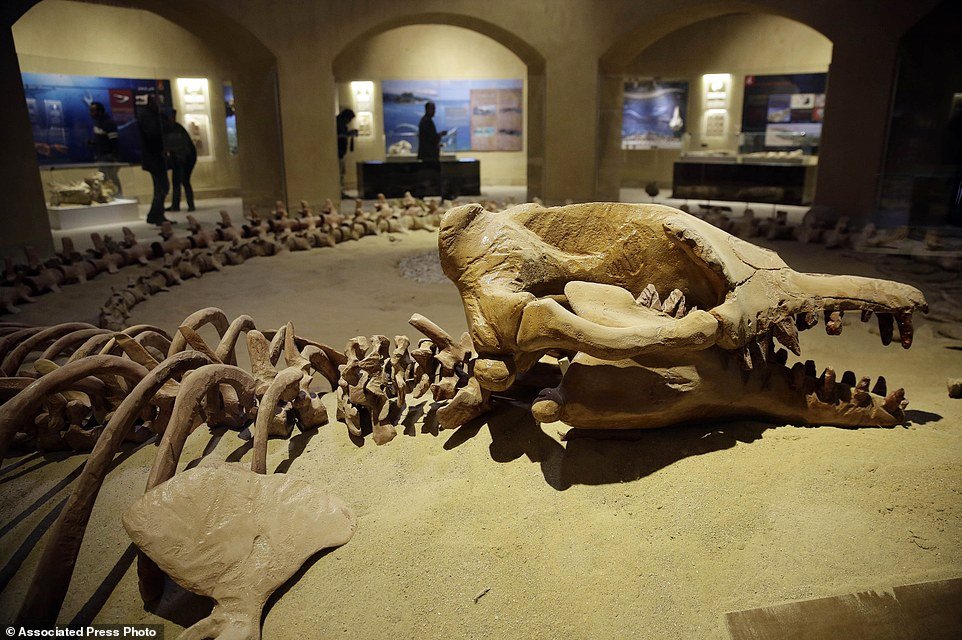The fossilized remains of marine creatures who ruled the oceans 37 million years ago are known as the “walking whales” of Egypt.
Dozens of fossilized whale bones have emerged from the Wati El Hitan in the Egyptian desert (pictured) and form the centre piece of a new museum that has been opened. Among them is an intact 37 million-year-old skeleton of a legged form of whale that measures more than 65 feet (20 metres) long
The likelihood of finding whales in Egypt's dry desert sands is low. But from the shifting sands of the Egyptian Sahara, dozens of fossilized remains of ancient relatives of the enormous sea animals have been discovered.
One of them is the 65-foot (20-meter) long, complete skeleton of a legged kind of whale that lived 37 million years ago.
The largest intact Basilosaurus isis whale fossil - an early formed of 'legged whale' - is one of the key attractions at the new Fossils and Climate Change Museum in Egypt's Valley of the Whales
Scientists are learning new things about how terrestrial mammals evolved into contemporary whales thanks to the relics.
The largest intact Basulosaurus isis whale fossil was discovered in the shifting sands of the Egyptian desert. The $2.17 billion (£1.5 billion) museum was built around the fossils to help protect and preserve them
A $2.17 billion (£1.5 billion) museum has been formally inaugurated in the Wadi Al-Hitan, often known as the Valley of the Whales. The region was formerly covered by a vast prehistoric ocean, but it has since disappeared as a result of falling sea levels and shifting landmasses. The museum is housed in a sand-colored dome-shaped building that has been constructed to safeguard many of the fossils.
In glass cases, fossilized remains from the fossils are displayed with stone-age artefacts, which show that people lived nearby thousands of years ago.
A visitor views the largest intact Basulosaurus isis whale fossil (pictured), which is on display at the Wati El Hitan Fossils and Climate Change Museum on the opening day. The fossils have proved invaluable to palaeontologists as they try to piece together the evolutionary history of modern-day sea mammals
The new Fossils and Climate Change Museum's architect, Gabriel Mikhail, claimed that the building was intended to blend in with its arid surroundings. “It would be a crime against nature, he argued, to construct something in such a stunning and distinctive location if it didn't mix in with the surroundings.”
The giant fossil is one of the most complete Basulosaurus isis whale fossil's to have been found. The species has earned the name 'walking whale' due to leg like limbs that are thought to have been a key evolutionary stage as whales evolved from land mammals











